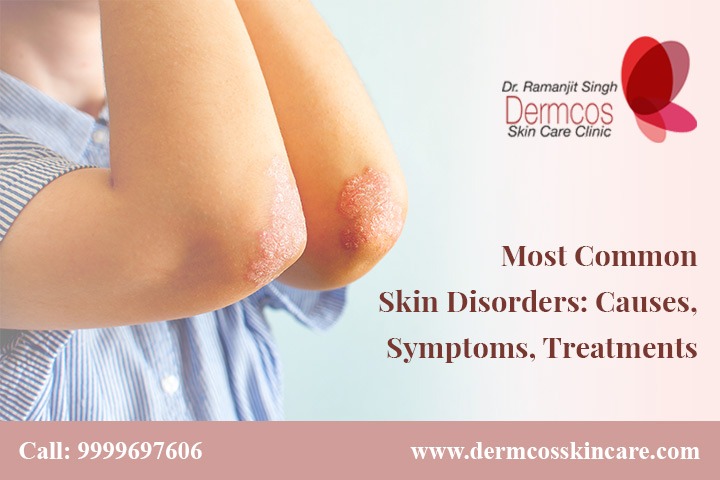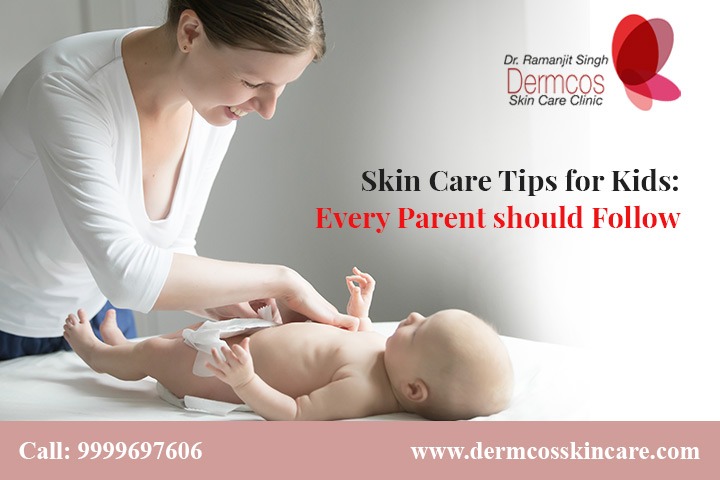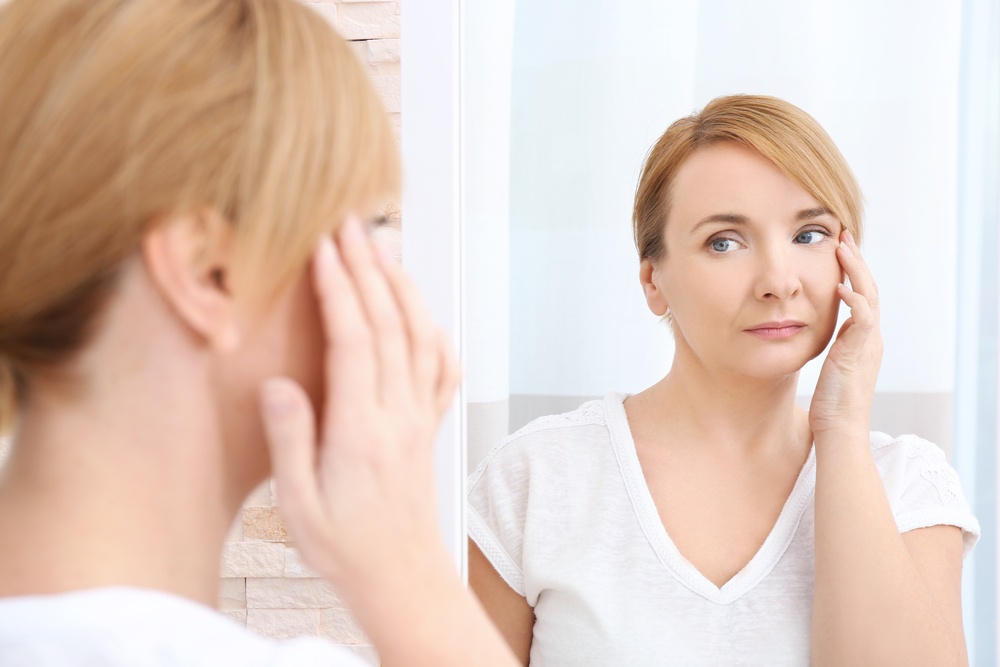Skin disease affects one-third of the human population and is mapped as the fourth most common diseases worldwide. Skin being the largest organ, has a multitude of functions such as protecting our body from microorganisms and harmful radiations, regulating body temperature, and acting as a barrier against any physical injury. Skin appendages such as hair follicles, sweat glands, and sebaceous glands further serve particular skin functions. So when this protective barrier is affected, the physiological functions related to skin are disturbed, leading to a lot of damage to our body. In patients with skin disorders the overall property and functionality of the skin is affected which can become detrimental in some cases. Any skin disorder is not limited to the skin surface only but has a deep impact on our internal organs also.
In this brief discussion, causes, symptoms, and current treatments of skin disorders are highlighted to give a comprehensive awareness to the reader.
Skin disorders vary widely in their symptoms and severity. While some skin disorders affect only the pigmentation, others affect metabolism of other organs and cause secondary infections. The several causes for skin infections depend on a person’s activity, environmental and genetic makeup.
For a broader summary the skin disease can be categorised as shown in the table.
| Temporary Skin Disease | Permanent Skin Disease | Skin Disease in Children |
| Contact Dermatitis | Rosacea | Eczema |
| Keratosis Pilaris | Psoriasis | Seborrheic dermatitis |
| Acne, hives, and warts | Vitiligo | Ringworm |
| Cold Sore | Eczema | Acne, hives, and warts |
| Fungal infections | Lupus | Diaper rashes |
| Moles |
What are the primary causes for skin infections?
There are many skin related disorders and each is caused by different factors including:
- Environmental
- Genetic
- Allergens
- Microbes
Skin disorders are not caused by any one factor instead it is a cumulative effect of several causative agents.
The most common environmental factor that causes skin disorder is sunlight. Prolonged exposure to direct sunlight causes skin cancer which initially occurs as a small lump on skin with irregular boundaries and later develops into a cancerous tissue of the size of 6 – 10 millimetres. Overexposure to UV rays from sunlight accounts for 80% of skin cancers whereas similar risk is also found in UV light from tanning beds. Air pollution is also among the leading causes of common skin disease due to the presence of contaminants which can trigger inflammatory reactions. Acne, hyperpigmentation, atopic dermatitis, and psoriasis are some of the skin disorders brought on by air pollution.
Genetic variations related to skin diseases such as atopic eczema, psoriasis, eczema, and acne are seen on the rise. However, these genetic variations are sometimes caused by external factors such as sunlight or stress. Whereas, hereditary skin disorders such as albinism where there is no pigmentation in hair and skin, can be passed down from generation to generation.
Allergens are substances that cause allergic reactions by provoking a strong immune response. Allergens can come from the food you eat or the make of a material which causes irritation or inflammation in skin. Atopic dermatitis and contact dermatitis are most common allergic skin conditions triggered by internal factors and external factors respectively. Atopic dermatitis is drying out of skin seen in infants and caused by food sensitivity. Whereas contact dermatitis is caused when the skin comes in direct contact with allergen.
Microbes are present everywhere and there activity on the skin is both beneficial and harmful. It would be interesting to know that skin is the home for many bacterias and prevents the growth of harmful ones. However, some bacterias are responsible for many skin infections wherein Staphylococcus and Streptococci are the two most common ones. Skin diseases are also caused by viruses, fungi, or parasites which enter the body through cuts and wounds on skin.
Though there are several causes for skin infection, maintaining a healthy lifestyle and good hygiene will manage most of the symptoms and add to the outcome of the treatment.
What are the common symptoms of skin disease?
Due to the numerous types of skin disorders, the symptoms vary significantly. However, some of the most common skin diseases can show any of the following symptoms.
- Discoloured patch of skin
- Dry skin
- Open Sores
- Ulcers
- Peeling of skin
- Rashes
- Pus filled bumps
- Scaly skin
- Changes in mole size and colour
Skin conditions can sometimes last forever. They come and go, though you may get some relief from the medications. Skin diseases that started in childhood can continue through adulthood while in some cases they stay dormant but flare up at certain times. Some of these symptoms cause itchiness on the skin which can last long and can be intense. The more you do, the more itchier it gets.
Though the list provides the possible symptoms of skin diseases, many internal diseases are also manifested on the skin. Several types of cancer and gastrointestinal disorders cause pigmentation and rashes on the skin and act as a marker for the underlying internal diseases.
What skin problems treatments are available?
An accurate diagnosis of disease is necessary for effective skin problems treatments. The symptoms of most skin diseases overlap and need the direction of a medical expert for proper diagnosis. Skin diagnosis is carried out by visual examination or medical tests specific for a disease by the dermatologists. Several diagnostic tools are available that is specific for skin disease types as highlighted in the table below:
| Testing method | Test Criteria |
| Biopsy | For abnormal growth on skin |
| Scraping | For presence of fungal infection |
| Culture | For presence of bacteria, fungi, or virus |
| Wood light | For presence of fungi and bacteria |
| Tzanck testing | For presence of viruses on blisters |
Though several skin treatment plans are available, the lingering question is how can the skin infection be cured?
Most of the skin problem treatment methods work by managing the symptoms such as rashes or itchiness. Temporary skin conditions such as allergic reactions can be completely cured by preventing re-exposure of skin to those allergens. However, most skin conditions never go away and need to be managed by proper medication, healthy lifestyle, and knowing the cause of the infection. Chronic skin conditions respond well to the treatment offered but needs to be continued for a longer period to keep the disease at bay. Several treatment methodologies focus on controlling the cause of skin disease including:
- Antibiotics and antifungal medications
- Antihistamines
- Steroid or vitamins
- Laser therapy
Medications such as antibiotics, antifungal, antihistamines can go a great way in managing symptoms. When the cause of the skin infection is bacteria, antibiotics are recommended which can be taken orally or through direct application on the infected area. Acne and small red bumps are caused by bacterial infection and hence can be treated with antibiotics.
Several fungal infections such as yeast infection, ringworm, nail infection, and diaper rashes are not contagious and can be treated with the use of antifungal cream. Antihistamines, on the other hand,are found effective against skin diseases caused by allergic reactions such as rash, hives, and swelling. The anti-inflammatory effects of such medication are helpful in relieving symptoms of atopic dermatitis, allergic contact dermatitis, urticaria, and angioedema.
Combination of vitamins and steroids have shown effective treatment for skin diseases. Studies have shown that oral and topical vitamin D therapies help in a great way with psoriasis especially in combination with steroids. Sometimes deficiency in vitamins can create issues with your skin causing acne, rashes, dry and cracked skin. Vitamin B deficiency has been linked to many skin diseases and hence vitamin supplements can provide a better means for your healthy skin.
A relatively new alternative and popular technique is laser therapy which is used to treat a number of dermatological conditions. The technique is very precise and targets the damaged area without affecting the healthy skin tissues. They have been helpful in treating skin inflammations as in psoriasis, acne, pigmentation or discolorations, and used for regenerating skin collagen.
How can you prevent skin disorders?
To know how the skin infection can be cured is one aspect which can be answered with the help of proper diagnosis and treatments. However, preventing a skin disorder, especially if the cause is hereditary or autoimmune, is unarguably not possible yet. Though some skin disorders caused by allergens can be prevented by avoiding contact with the allergens, there are many skin disorders where it cannot be prevented but can be managed if you:
- Maintain a hygiene condition by washing your hand regularly with water and soap.
- Maintain a healthy diet especially keep away from food that makes the symptoms severe.
- Avoid sharing your personal things such as cosmetics and clothes.
- Avoid having direct contact with the people having skin disorders.
- Keep yourself hydrated by drinking a lot of water.
- Avoid any physical and emotional stress as these can aggravate the symptoms.
To know how the skin infection can be cured, one has to understand the root cause of the disease and know how to manage it with medications or treatment plans. Hence, connecting with an expert dermatologist is very important as they can properly diagnose and manage the skin disease.
At Dermcos Skin Care Clinic, Gurgaon, the expertise of Dr. Ramanjith Singh and his team provides great acuity in analysis of any type of skin disorders with their state of the art facility and standardised treatment plans.



